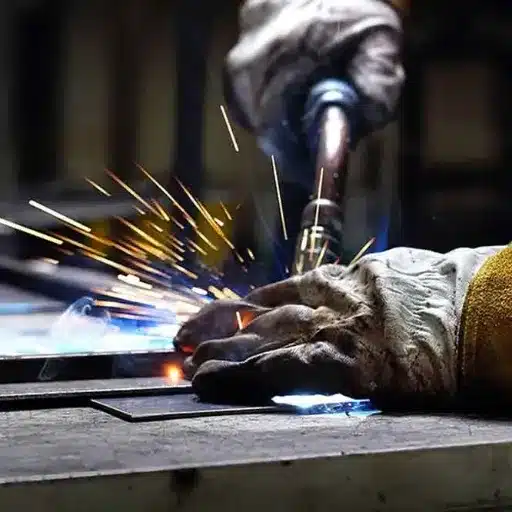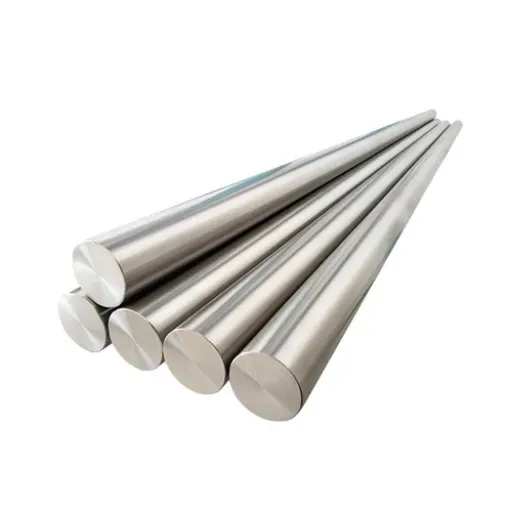Knives remain one of the most common tools in a kitchen; however, they are not all equal. High-carbon stainless steel knives stand out from the crowd due to their durability and performance when it comes to sharpness. These knives provide both stainless steel and high carbon steel benefits, because they are corrosion-resistant and have edge retention strength. What makes high-carbon stainless steel so special? Why do both professional chefs and cooking enthusiasts love it so much? This comprehensive guide details everything from the unique characteristics of high-carbon stainless steel to its benefits and tips for selection, use, and maintenance. From veteran chefs to beginners, this guide will provide the information needed to understand why high-carbon stainless steel may be the answer your kitchen has been looking for.
What is High Carbon Stainless Steel?

High carbon stainless steel is a combination of metal alloys that includes both the corrosion-resistant properties of stainless steel and the strength and durability of high carbon steel. It’s more brittle than ordinary stainless steel, as it has a higher carbon content, improving hardness and edge retention, making it preferable for knives and tools. Its stainless steel properties also prevent rusting and staining while enabling easy maintenance. This unique combination makes high-carbon stainless steel popular among both professional and home cooks; hence, this is the preferred material for cookware.
Properties and Composition of High-Carbon Stainless Steel
High-carbon stainless steel is an alloy that integrates the resilience of stainless steel with the sharpened, precision, and fine edge retention of high-carbon steel. Its chrome content of at least 10.5% enables its carbon content of 0.3-1.2% per grade to flourish. High-carbon stainless steel’s advantages lie in its ability to resist staining, corrosion, and wear due to the elevated hardness level caused by the higher content.
Modern advancements in the metallurgy of high-carbon stainless steels have made the development of new grades such as AUS-10, 440C, and VG-10 possible. These grades are optimized for extreme edge retention, corrosion resistance, and internal toughness, making them ideal for premium knives, surgical instruments, and industrial tools. For example, VG-10 is one of the most preferred stainless steels because of its fine grain structure and outstanding sharpness retention in professional kitchens worldwide.
Recent reports suggest that high-carbon stainless steel alloys have tensile strength measures of nearly 1,600 MPa (megapascals), translating to good performance under high-stress environments. In addition, they have a tensile strength of approximately 55-62 HRC, allowing for some brittleness but great resilience to chipping, deformation, and loss of sharp edges during extended use.
The unique microstructure of high-carbon stainless steel drives key requirements for high performance and long service life. This alloy offers an unparalleled balance between strength, sharpness, and environmental resistance, and its applications are plentiful, encompassing everything from kitchen tools to surgical devices and even precision machinery.
The Difference Between High Carbon and Other Steels
| Parameter | High-Carbon Steel | Low-Carbon Steel | Medium-Carbon Steel |
|---|---|---|---|
| Carbon Content | 0.6% – 1.5% | 0.05% – 0.32% | 0.3% – 0.6% |
| Strength | Very high | Low | Moderate to high |
| Hardness | Very hard | Soft | Hard |
| Ductility | Low | High | Moderate |
| Malleability | Low | High | Moderate |
| Corrosion Resistance | Moderate | Poor | Moderate |
| Weldability | Difficult | Easy | Moderate |
| Applications | Tools, springs, cutting tools | Construction, appliances, auto parts | Machinery, automotive, structural uses |
| Cost | Higher | Lower | Moderate |
Key Characteristics of High-Carbon Stainless Steel
| Parameter | Description |
|---|---|
| Carbon Content | 0.6% – 1.0% |
| Hardness | High, suitable for cutting tools and knives |
| Edge Retention | Excellent, maintains sharpness for extended periods |
| Corrosion Resistance | Good, resists rust and oxidation |
| Stain Resistance | Resists staining from acidic/alkaline substances |
| Durability | High, suitable for demanding applications |
| Applications | Knives, surgical tools, industrial cutting tools |
| Maintenance | Requires regular cleaning and drying |
| Cost | Higher than regular stainless steel |
| Sharpening Difficulty | More challenging than lower carbon steels |
How Does High-Carbon Stainless Steel Compare to Carbon Steel?
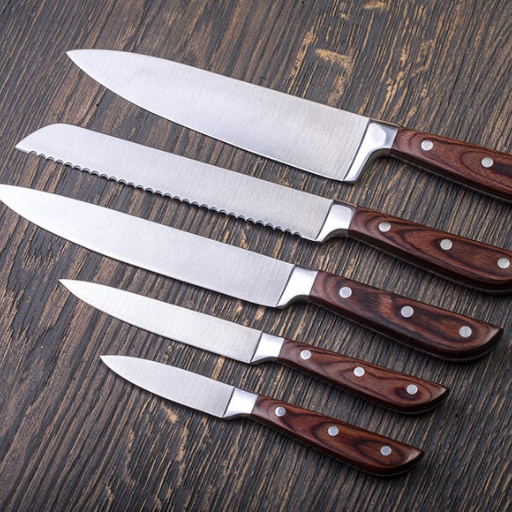
The taxonomy and composition of steel offer many types, such as high-carbon stainless steel, which differ in performance and applications. (insert table) An example of the difference is that high carbon stainless steel utilizes chromium-containing alloys, which provide advanced corrosion resistance in environments prone to rust and staining, and carbon steel, on the other hand, lacks significant chromium content, which makes it more prone to rust but offers higher overall strength and toughness.
High-carbon stainless steel is used in cutlery, medical instruments, and decorative purposes because of its wear resistance. Carbon steel is favorable in construction tools and machinery because of its strength and cost efficiency. Both steels offer unique properties. Stainless steel has less volume percent than the traditional steel alloy while maintaining valuable attributes such as strength and lacking in corrosion resistance. The choice always comes down to the specific requirements of the application.
Steel vs Stainless Steel: Understanding the Basics
Understanding the differences and applications of steel and stainless steel requires one to evaluate their specific attributes, features, and uses. The following highlights the five most important differences between the two:
- Comparison
- Steel, often called steel, signifies a mix of carbon and iron.
- Compared to steel, stainless steel also includes other industrial metals like chromium (in the quantity of at least 10.5%) and sometimes nickel, which enhances the overall corrosion resistance.
- Resistance to Corrosion
- Moisture and oxygen make steel prone to rusting and corroding over time.
- Being rich in chromium, which forms an oxide layer, stainless steel is highly resistant to rust and corrosion.
- Strength and Damage Resistance
- Carbon steel stands out in meeting the demand for heavy-duty tasks because it is stronger and more resilient.
- Carbon steel is softer than stainless steel. However, stainless steel’s toughness, ductility, weathering, and corrosion resistance make it ideal for other specific environments.
- Variety of Uses
- Due to its cost efficiency and superior strength, steel is widely used in construction, tools, and machinery.
- Stainless steel is often used in kitchen appliances and surgical instruments alongside architecture because of its appealing noncorrosive properties.
- Pricing
- Steel is more cost-effective when corrosion resistance is not needed than stainless steel when high strength is required.
- Although more expensive, stainless steel is more durable and requires less maintenance in corrosive environments.
Knowing these differences avoids issues while choosing between steel and stainless steel for industrial and commercial applications.
Comparing High-Carbon and Carbon Steel
| Parameter | High-Carbon Steel | Carbon Steel |
|---|---|---|
| Carbon Content | 0.6% – 1.5% | 0.05% – 0.6% |
| Hardness | Very high | Moderate to high |
| Strength | Excellent | Good |
| Ductility | Low | Moderate to high |
| Brittleness | High | Low to moderate |
| Corrosion Resistance | Moderate (with treatment) | Poor |
| Weldability | Difficult | Easier |
| Applications | Tools, springs, cutting tools | Construction, machinery, and auto parts |
| Cost | Higher | Lower |
| Heat Treatability | Excellent | Moderate |
The Difference Between Carbon Steel and Stainless Steel
| Parameter | Carbon Steel | Stainless Steel |
|---|---|---|
| Composition | Iron, carbon, and minimal alloying elements | Iron, chromium (≥10.5%), nickel, molybdenum |
| Corrosion Resistance | Low, prone to rust | High, resists rust and oxidation |
| Strength | High tensile strength | Moderate tensile strength |
| Hardness | High | Moderate |
| Ductility | Low | High |
| Appearance | Matte, can be coated | Shiny, lustrous |
| Cost | Lower | Higher |
| Heat Resistance | Moderate | High |
| Machinability | Easier to machine | Requires specialized tools |
| Applications | Tools, structural components | Kitchenware, medical, marine environments |
Why Choose High-Carbon Stainless Steel Knives?
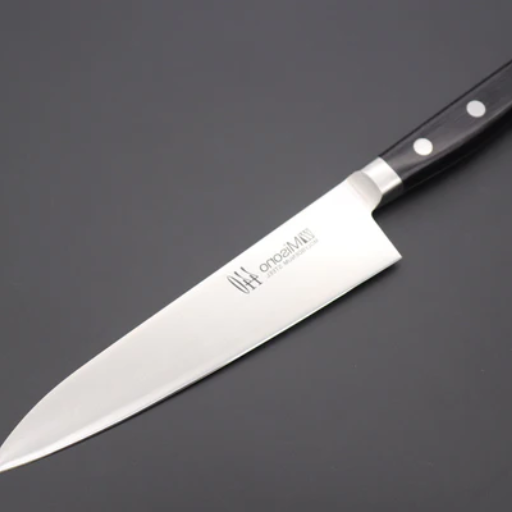
Sharp, rust-resistant, and durable knives require frequent upkeep. High-grade stainless steel knives have shown exceptional precision in both home and professional kitchens. Their carbon content allows stainless steel to be sharper for longer compared to lesser grades. The stainless steel component defends the knife against staining and rust, thus ensuring a long period between maintenance.
Benefits of High-Carbon Stainless Steel Knives
| Parameter | Description |
|---|---|
| Sharpness | Achieves and retains a razor-sharp edge |
| Edge Retention | Long-lasting sharpness with minimal maintenance |
| Corrosion Resistance | Resists rust and staining with proper care |
| Durability | Tough and suitable for demanding tasks |
| Versatility | Ideal for precision cutting and heavy-duty use |
| Ease of Sharpening | Relatively easy to sharpen to a fine edge |
| Aesthetic Appeal | Maintains a polished, professional appearance |
| Heat Resistance | Performs well under high temperatures |
| Hygiene | Resists food acids and maintains cleanliness |
| Longevity | High-quality material ensures an extended lifespan |
Understanding Edge Retention and Sharpness
| Aspect | Key Points | Details |
|---|---|---|
| Edge Retention | Ability to maintain cutting ability | Influenced by steel composition, carbides |
| Sharpness | Initial cutting ability of the blade | Affected by edge angle and finish |
| Edge Angle | Lower angles improve sharpness | Higher angles enhance durability |
| Carbide Content | More carbides increase wear resistance | Reduces toughness and ease of sharpening |
| Steel Hardness | Higher hardness improves edge retention | Excessive hardness risks brittleness |
| Sharpening Technique | Proper burr removal ensures durability | Over-polishing reduces edge longevity |
| Cutting Surface | Softer boards preserve edge sharpness | Hard surfaces dull edges faster |
| Use and Maintenance | Regular honing extends edge life | Avoid misuse to prevent chipping |
Considering Corrosion Resistance and Rust Protection
According to “Advanced Knife Sharp Technologies Ultra-High Carbon Inserts For Woodturning Tools: A New Concept In Sharp Microhedges,” High carbon stainless steel also contains chromium, which enhances resistance against abrasion. Furthermore, chromium creates a protective barrier against moisture, lowering the chances of rust forming if the knife is left unattended in a humid environment. However, high carbon stainless steel knives still require basic to moderate maintenance, increasing their life span.
How to Care for Your High-Carbon Increasinging Stainless Steel Knife?
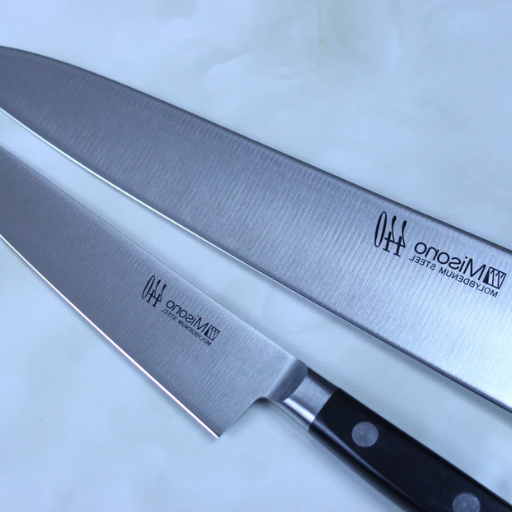
- Immediate Cleaning
Following each use, the knife must be washed with warm, soapy water and not soaked in water for long.
- Thorough Drying
To prevent moisture accumulation, the knife should be dried using a clean, soft towel immediately after washing.
- Abrasive Material Avoidance
Harsh chemicals or scrubbers can damage the blade’s edge, so they must be avoided at all costs.
- Proper Storage
Magnets, knife blocks, removing guards, and sheath guards can all be used to store the blade while shielding it and the other surfaces.
- Sharpen Whenever Necessary
Cutting effectiveness and efficiency can be maintained with the help of a whetstone or professional sharpening service.
These instructions will greatly aid in maintaining the quality and increasing the life span of your high-carbon stainless steel knife.
Proper Sharpening Techniques for Steel Knives
Advanced techniques can be used for steel sharpening. The sharpened edge is held against honing rods at a consistent twenty-degree angle. When the sharpening is done, the blade should be honed along both sides to restore the edge.
Maintaining Corrosion Resistance and Avoiding Rust
To prevent rust and maintain the knife’s resistance to corrosion, I clean and dry the knife after every use. I then place it in a location free of moisture; preferably, I stow the knife in a knife block or cover the blade with a sheath. I lightly oil it with food-grade oil to protect the blade from moisture and oxidation.
Tips for Long-lasting Sharpness and Edge Retention
- Choose the Correct Cutting Surface
Cuts made on wooden or plastic cutting boards will use less knife edge than on granite, glass, or ceramic surfaces. Hard surfaces will not only ruin the knife edge but also blunt softer knives over time.
- Correct Use of Technique
Most knives will dull if used for twisting, prying, or cutting hard materials such as bones. Using knives for any other job they were not intended for risks losing the edge and chipping the blade.
- Regular Honing and Sharpening
The blade on the knife should be realigned from time to time. Honing is best done during several sessions and is easier when done frequently. Missing more frequent honing sessions will only make sharpening weapons like we stones needed on a more frequent basis. Since experts suggest two to three uses of the knife for restoring the blade, a lack of maintenance can result in the blade losing its edge and remaining useless, according to studies conducted.
- Knives should always be washed and dried as soon as possible after use.
Cutting knives need to be cleaned and dried right away, as any leftover residue from acidic food such as tomatoes and citrus can micro-corrode the blade.
- Maintaining the Sharpness of Your Knife
A knife block, magnetic strip, or blade guards serve as proper cutlery storage. This helps maintain a knife’s sharpened edge, as the blade does not rub against other surfaces. Knives are often stored in drawers with other utensils and, for lack of a better term, tossed around. This is one of the primary culprits for the loss of sharpness due to the blade coming into contact with various objects.
- Invest in High-Quality Steel
Blades forged using high-carbon or stainless steel and further tempered tend to retain their sharpness better. This can also be said for modern kitchen knives made using advanced materials like VG10 and AUS-10, which offer greater durability and keep sharp edges up to three times longer than traditional stainless steel blades.
Regardless of the specific context regarding your knife collection, whether for professional or personal reasons, utilizing these tools will guarantee the blade’s performance and durability for an extended period.
What are the Stainless Steel Grades in High-Carbon Variants?
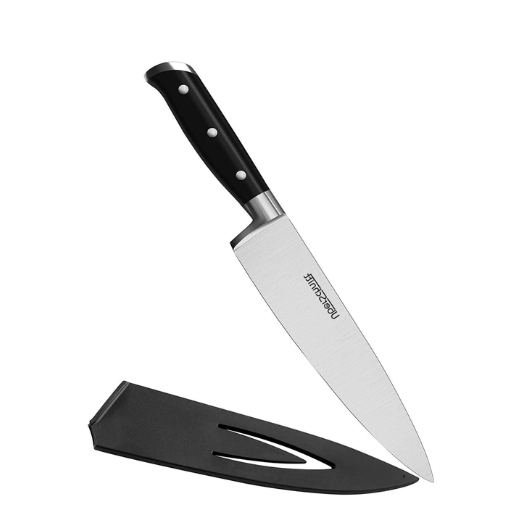
| Grade | Carbon Content (%) | Key Features | Common Applications |
|---|---|---|---|
| 420 | 0.15–0.40 | Good hardness, wear resistance | Knives, scissors, surgical tools |
| 420HC | 0.40–0.50 | Improved hardness, corrosion resistance | Knife manufacturing |
| 440A | 0.60–0.75 | High corrosion resistance, hardness | Bearings, wear-resistant knives |
| 440B | 0.75–0.95 | Higher hardness than 440A | Tools requiring high wear resistance |
| 440C | 0.95–1.20 | Extreme hardness, wear resistance | High-end knives, bearings |
| 154CM | ~1.05 | Enhanced toughness, corrosion resistance | Military, outdoor tools |
| M390 | ~1.90 | Extreme edge retention, corrosion resistance | Premium knives, industrial tools |
Exploring Different Martensitic Stainless Grades
| Grade | Carbon Content (%) | Key Features | Common Applications |
|---|---|---|---|
| 410 | 0.10–0.15 | General-purpose, moderate strength | Valves, fasteners, turbine blades |
| 420 | 0.15–0.45 | High hardness, wear resistance | Cutlery, surgical tools, bushings |
| 431 | ~0.20 | Added nickel, better corrosion resistance | Marine shafts, bolts, and aerospace parts |
| 440A | 0.60–0.75 | High corrosion resistance, toughness | Bearings, cutlery, and surgical tools |
| 440B | 0.75–0.95 | Higher hardness than 440A | Tools requiring wear resistance |
| 440C | 0.95–1.20 | Maximum hardness, wear resistance | High-end knives, industrial tools |
The Role of Chromium in High-Carbon Stainless Steel
| Aspect | Role of Chromium | Key Benefits |
|---|---|---|
| Corrosion Resistance | Forms passive film on the surface | Protects against rust and oxidation |
| Hardness | Combines with carbon to form carbides | Enhances wear resistance |
| Heat Resistance | Improves oxidation resistance at high temperatures | Suitable for high-temperature applications |
| Strength | Increases steel hardenability | Improves mechanical properties |
| Toughness | Reduces brittleness in tempered steel | Enhances durability |
| Aesthetic Finish | Enables bright, polished surface | Improves visual appeal |
Understanding Alloy Composition and Hardness
The hardness, durability, and overall performance of high-carbon stainless steel are impacted significantly by its alloy composition. Incorporation of other elements during the alloying process aids manufacturers in designing stainless steel with enhanced resistance to corrosion, improved edge retention, and greater toughness, among other properties. High carbon stainless steel has five commonly used alloying elements that broadly impact its properties:
- Carbon (C)
- Role: Increases hardness and edge retention.
- Impact: Increasing the amount of carbon in steel tends to increase the steel’s capability to hold a sharp edge while slightly reducing toughness.
- Chromium (Cr)
- Role: Adds hardness and improves corrosion resistance.
- Impact: Steel must contain at least 10.5% chromium to be ‘stainless steel’ since a protective chrome oxide layer will be developed.
- Vanadium (V)
- Role: Enhances strength along with improving wear resistance.
- Impact: Due to refining the grain structure, vanadium enhances the overall toughness and provides a sharper edge.
- Molybdenum (Mo)
- Role: Molybdenum aids in withstanding ‘pitting’ while providing high temperature strength.
- Impact: Mostly alloyed in steels built for extreme or corrosive environments.
- Nickel (Ni)
- Role: Provides improved ductility and toughness.
- Impact: Composing steel with nickel leads to a more ductile and less brittle material and also aids in maintaining the structure under stress.
By optimum balancing these factors, manufacturers are able to create high-carbon stainless steels that operate efficiently under different circumstances.
References
- Springer: Carbon paraequilibrium in austenitic stainless steel – Discusses high carbon levels in stainless steel and their effects on properties like surface hardness.
- Wiley Online Library: The use of stainless steel in structures – Explores the design philosophy and properties of stainless steel, including its ductility and applications.
- ScienceDirect: Cross-section classification for cold-formed and built-up high strength carbon and stainless steel tubes under compression – Examines high strength carbon and stainless steel, including their structural applications and definitions.
Frequently Asked Questions (FAQ)
Q: What is high-carbon stainless steel?
A: High-carbon stainless steel combines the benefits of stainless steel and high-carbon steel. It contains a higher carbon content than regular stainless steel, enhancing its hardness and edge retention while offering corrosion resistance.
Q: How does high-carbon stainless steel differ from regular stainless steel?
A: High-carbon stainless steel contains a higher amount of carbon than regular stainless steel, resulting in greater hardness and better edge retention. This makes it ideal for kitchen knives and other cutting tools where a sharp edge is essential.
Q: What are the advantages of using high-carbon stainless steel for knives?
A: Knives made from high-carbon stainless steel offer a combination of sharpness, durability, and resistance to rust. The higher carbon content allows for a sharper edge, while the stainless properties protect against corrosion and staining.
Q: Can high-carbon stainless steel knives rust?
A: High-carbon stainless steel knives are more rust-resistant than non-stainless ones, but they can still rust if not properly cared for. To prevent steel rust, it’s essential to keep it dry and clean.
Q: How should I care for my high-carbon stainless steel knife?
A: To maintain your high-carbon stainless steel knife, always hand wash and dry it immediately after use. Avoid leaving it in water for prolonged periods, and occasionally apply a light coat of oil to protect the blade.
Q: What is the role of carbon content in high-carbon stainless steel?
A: The carbon content in high-carbon stainless steel increases the blade’s hardness and edge retention. The higher carbon content allows the steel to be heat-treated to achieve high hardness, making it ideal for sharp cutting edges.
Q: Is there a difference between high-carbon stainless steel and carbon steel knives?
A: Yes, high-carbon stainless steel knives offer corrosion resistance, unlike carbon steel knives, which are prone to rust. However, carbon steel knives can develop a patina over time, which is often desired by some chefs for their unique appearance and protective qualities.
Q: What is martensitic stainless steel, and how does it relate to high-carbon stainless steel?
A: Martensitic stainless steel is a type of stainless steel that can be hardened by heat treatment, similar to high-carbon stainless steel. It has a higher carbon content than other stainless steels, providing a good balance between hardness and corrosion resistance, making it suitable for cutlery.
Q: Why is high-carbon stainless steel preferred for kitchen knives?
A: High-carbon stainless steel is preferred for kitchen knives because it offers an excellent balance of sharpness, durability, and resistance to corrosion. These properties make it a popular choice for professional and home cooks requiring reliable and long-lasting knives.
Q: Can high-carbon stainless steel be used for applications other than knives?
A: Yes, high-carbon stainless steel can be used for various applications beyond knives, such as in surgical instruments, industrial tools, and any application where a combination of toughness and corrosion resistance is desirable.


